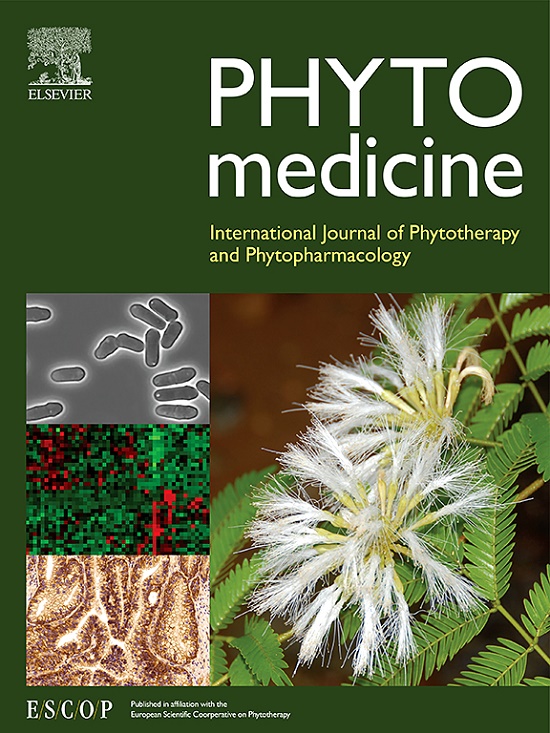Theabrownins improve burn-induced kidney injury by increasing the levels of guanidinoacetic acid and fumaric acid
IF 6.7
1区 医学
Q1 CHEMISTRY, MEDICINAL
引用次数: 0
Abstract
Background
Burns are a common and serious health issue, with severe burn-induced acute kidney injury (AKI) being a major factor contributing to poor recovery and increased mortality in patients. Theabrownins (TBs), bioactive compounds formed during tea leaf fermentation, have shown promising effects on reducing inflammation, combating oxidative stress, and enhancing metabolic function. However, the roles and mechanisms of TBs in burn-induced kidney injury are still not fully understood.
Methods
The dorsal skin of 3-month-old mice was exposed to hot water for 10 s to induce burn-related renal injury. The mice were then orally administered TBs (40 mg/kg and 400 mg/kg). After 24 h of treatment, the mice were sacrificed for tissue collection. Transcriptomic and metabolomic analyses were performed to identify the pathways modulated by TBs. Metabolomics revealed TB-associated renal metabolites, such as guanidinoacetic acid (GAA) and fumaric acid (FA). Renal tubular epithelial (HK2) cells pretreated with GAA and FA were exposed to hydrogen peroxide (H2O2), cisplatin (CDDP) and erastin to establish a cell injury model. Changes in the levels of relevant molecules were assessed using quantitative RT-PCR, Western blotting, and fluorescence staining.
Results
TB treatment significantly increased the survival rate and reduced kidney injury in mice with burn injury. Multiomics analyses and molecular experimental validation revealed that TB treatment downregulated the inflammation, apoptosis, and ferroptosis pathways in the kidneys of mice with burn injury and increased the levels of the renal metabolites GAA and FA. Cellular experiments confirmed that GAA and FA alleviated H2O2-, CDDP- and erastin-induced renal tubular epithelial cell injury by inhibiting apoptosis and ferroptosis.
Conclusions
Burns induce inflammation and kidney damage by upregulating the apoptosis and ferroptosis pathways in renal tissue. TBs alleviate burn-induced renal apoptosis and ferroptosis by increasing the levels of GAA and FA in the kidneys, thereby ameliorating kidney damage. This study innovatively and systematically evaluated the ability of TBs to ameliorate burn-induced kidney injury and, for the first time, identified the potential mechanism by which TBs ameliorate burn-induced kidney damage by increasing the levels of the metabolites GAA and FA in the kidneys.

背景烧伤是一种常见的严重健康问题,严重烧伤诱发的急性肾损伤(AKI)是导致患者恢复不良和死亡率上升的主要因素。茶褐素(TBs)是茶叶发酵过程中形成的生物活性化合物,在减轻炎症、对抗氧化应激和增强代谢功能方面显示出良好的效果。方法将 3 个月大的小鼠背皮暴露在热水中 10 秒钟,诱导与烧伤相关的肾损伤。然后给小鼠口服结核菌素(40 毫克/千克和 400 毫克/千克)。治疗 24 小时后,小鼠被处死以收集组织。研究人员进行了转录组学和代谢组学分析,以确定受结核菌素调节的通路。代谢组学发现了结核相关的肾脏代谢物,如胍基乙酸(GAA)和富马酸(FA)。用 GAA 和 FA 预处理的肾小管上皮细胞(HK2)暴露于过氧化氢(H2O2)、顺铂(CDDP)和麦拉宁,以建立细胞损伤模型。采用定量 RT-PCR、Western 印迹和荧光染色评估了相关分子水平的变化。多组学分析和分子实验验证表明,结核病治疗可下调烧伤小鼠肾脏的炎症、细胞凋亡和铁凋亡通路,并提高肾脏代谢产物 GAA 和 FA 的水平。细胞实验证实,GAA 和 FA 通过抑制细胞凋亡和铁凋亡,减轻了 H2O2-、CDDP- 和厄拉斯汀诱导的肾小管上皮细胞损伤。结核菌素可通过提高肾脏中 GAA 和 FA 的水平来缓解烧伤诱导的肾脏凋亡和铁凋亡,从而改善肾脏损伤。这项研究创新性地系统评估了结核菌素改善烧伤引起的肾损伤的能力,并首次确定了结核菌素通过提高肾脏中代谢物 GAA 和 FA 的水平来改善烧伤引起的肾损伤的潜在机制。
本文章由计算机程序翻译,如有差异,请以英文原文为准。
求助全文
约1分钟内获得全文
求助全文
来源期刊

Phytomedicine
医学-药学
CiteScore
10.30
自引率
5.10%
发文量
670
审稿时长
91 days
期刊介绍:
Phytomedicine is a therapy-oriented journal that publishes innovative studies on the efficacy, safety, quality, and mechanisms of action of specified plant extracts, phytopharmaceuticals, and their isolated constituents. This includes clinical, pharmacological, pharmacokinetic, and toxicological studies of herbal medicinal products, preparations, and purified compounds with defined and consistent quality, ensuring reproducible pharmacological activity. Founded in 1994, Phytomedicine aims to focus and stimulate research in this field and establish internationally accepted scientific standards for pharmacological studies, proof of clinical efficacy, and safety of phytomedicines.
 求助内容:
求助内容: 应助结果提醒方式:
应助结果提醒方式:


